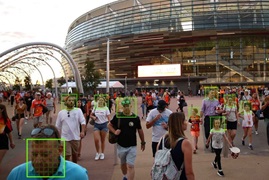The activation of new facial recognition camera systems in Perth and Brisbane has raised concerns about how the technology is being quietly introduced by Australian governments as a way of monitoring their citizens. The technology was recently rolled out on the west and east coasts with little, if any, consultation with the public the government plans to watch.
Legal experts now say the public must be engaged in a debate about whether they want this powerful technology and how it could affect them in their day-to-day lives. “We need to have a robust discussion with the community about … the types of cities we want to live in and the technology we use in them,” said Monique Mann from Australian Privacy Foundation.
The City of Perth has just rolled out a 12-month-trial of the technology in 30 CCTV cameras in East Perth, with only three cameras activated to use the technology at any one time.
But the beleaguered authority — which is being run by Government-appointed commissioners until an inquiry into its operations is completed, following the dismissal of the city’s council and mayor — is refusing to say exactly which cameras will screen citizens because of “security reasons”.
Queensland sports fans and concert goers learnt this week via the media that they were being monitored with the technology at major stadiums. As in Perth, signs at the stadiums told patrons they were being watched by CCTV but failed to mention this surveillance also included facial recognition technology which could be used by police.
The technology scans and stores our facial features as unique data. It is then matched against photos — for example, pictures stored in the Federal Government’s vast biometric database, which includes drivers licences, passports and those harvested from social media accounts. City of Perth acting director of economic development and activation, Daniel High, said the technology would only be activated at the request of law enforcement authorities, such as the Australian Federal Police or WA Police.








